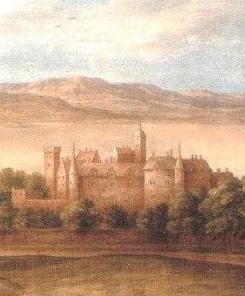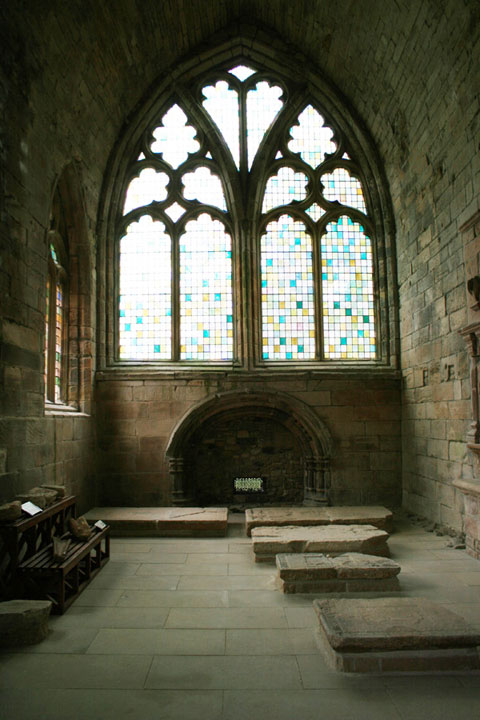|

The Lords Seton
 Before
the Lords were created, the family maintained a tradition of
Knights, for thirteen generations until the mid-14th century,
and passed this training hereditarily to every son of the
House. Eventually the direct male-line of the Seton's ended
with the heiress Margaret de Seton, who married her cousin Alan
de Winton, himself a Seton descended from Philip de Seton who
had recieved the Charter of the Lands of Winton in 1169, and
who's branch of the family had taken their name of Winton from
their estate of Winton which they had recieved in patrimony. Before
the Lords were created, the family maintained a tradition of
Knights, for thirteen generations until the mid-14th century,
and passed this training hereditarily to every son of the
House. Eventually the direct male-line of the Seton's ended
with the heiress Margaret de Seton, who married her cousin Alan
de Winton, himself a Seton descended from Philip de Seton who
had recieved the Charter of the Lands of Winton in 1169, and
who's branch of the family had taken their name of Winton from
their estate of Winton which they had recieved in patrimony.
Their son, Sir William
Seton was knighted prior to becoming the 1st Lord Seton and was
the first ever and first created Scottish Lord of Parliament,
which made the Lord's Seton the Premier Baron's of Scotland.
The original line of the Seton's
devolved upon Sir Alexander the 3rd who married Christian Cheyne,
is known for the conspicuous part which he took in the defence of
his country against the invasion of the English as the Governor of
the town of Berwick, besieged by Edward III of England in 1333.
He succeeded in sinking and destroying by fire a great part of the
English fleet.
The siege eventually converted into a blockade, and
as the supplies began to fail and starvation was imminent, the
Governor agreed to capitulate by a certain day, and gave hostages
among whom was his son, Thomas. However, before the
appointed period, a body of Scottish soldiers marched into
Northumberland, and Edward insisted that the town should be
surrendered.
The besieged refused, and Edward, enraged at this
refusal caused Thomas Seton and his brother William (previously
captured) - to be hanged before the gate of the town. Another son
of Sir Alexander Seton fell in their country’s cause - during the
the attack on the English fleet at Berwick, July, 1333, leaving
only two sons remaining, Alexander and John.
Sir John Seton, the
younger son founded the Seton's of Parbroath, and the eldest
surviving son, the 4th Sir Alexander Seton, married Margaret
Murray, and later sought refuge from his sorrows and troubles in a
hospital of the order of St. John of Jerusalem, his only child
Margaret becoming heiress of the extensive estates.
She married
Alan de Wyntoun, a cadet of her own family, and this marriage led
to a sanguinary contest between rival, and disappointed suitors,
called ‘the Wyntoun’s war’ which according to Wyntoun, the
chronicler, caused more than a hundred ploughs to be laid aside
from labour. Alan de Wyntoun died in the Holy Land, and his eldest
son, Sir William Seton, was created 1st Lord Seton by King Robert
II.
The 1st
Lord Seton married Catherine St. Clair of Herdmanston, daughter of Sir William
St. Clair, a great house at that time and connected with the Sinclairs of
Rossyln, noted for the legendary Templar connection. By her he had two sons and
six daughters.
The eldest son, John, succeeded his father, while the second
son, Alexander, married, in 1408, Elizabeth, daughter and heiress of Sir Adam
Gordon, and founded a family of Seton blood which rose to fame and importance
and the highest ranks of the peerage, in that of the Gordon’s of Strathbogie or
Huntly. In fact, Sir William had arranged for his eldest son John to be
wedded to the heiress of Gordon, but John had married Janet Dunbar, daughter of
the Earl of March, much to his fathers displeasure.
Sir
William became a famous knight in the middle of the fourteenth century, and
visited Jerusalem, and through both his own and his wife’s family connections,
was also active in the Sinclair-Templar affairs at Rosslyn. On his return from
his crusade to Jerusalem, he took part, in 1383, with the Borderers of Scotland,
in that raid into England described so graphically by Froissart (who names him),
“for they said there had been such damage done to their lands as was
disagreeable to themselves and friends, which they would revenge the very first
opportunity.” They came back with a rich booty in prisoners and cattle.
The
battle of Otterburn, which furnished material for the ballad of Chevy Chase, was
fought on the 19th of August, 1388, and Sir William was there.
Friossart’s calling him “le seigneur de Seton” confirms the testimony of
Maitland that he was created a Lord of Parliament, as we shall presently see.
Sir
William Seton, 1st Lord Seton, belonged to the third
Order of Saint Francis, and dying in February, 1409, was buried in the Church of
the Franciscan Friars (The Grey Friars) in Haddington, to whom he left by will
six loads of coal weekly, out of his coal-pit of Tranent, and forty shillings
annually, to be charged on his estate of Barnes. His widow is described as a
virtuous and energetic woman, who got husbands for four of her daughters, and
built a chantry on the south side of the parish church of Seton, prepared a tomb
for herself there, and made provision for a priest to say mass perpetually for
the repose of her soul.
King
David II., by charter dated 23 October 1369, confirmed that donation which
William de Seton had made to Adam Forest of two carucates of land in the town of
Nudreff (Niddry) in the constabulary of Linlithgow. William de Setoun granted a
charter delecto armigero nostro Johanni de Fravayd, probono et fideli services
miki impenso et impendento, of the whole lands of Wester Favayd (Falside), in
the barony of Travernent (Tranent), confirmed by King Robert II., 20th
June 1371.
A charter was granted by Robert Duke of Albany, 27 March 1408,
confirming that impignoration which our beloved William de Setoun, Knight, had
made with consent of our beloved cousin, John de Setoun, Knight, his son and
heir, to our beloved son, Walter de Haliburton of Dryltoun, of an annual rent of
50 marks out of his barony of Travernent, as well out if the lands as out of the
coal works of the same, for 500 marks due to the said Walter, for the marriage
of Elisabeth de Gordoun, daughter and heiress of the deceased Adam de Gordoun,
to be held by the said Walter his heirs or assigns, till the said sum of 500
marks is paid by the said William de Setoun, or his heirs, in the parish church
of Gulyne.
| 

